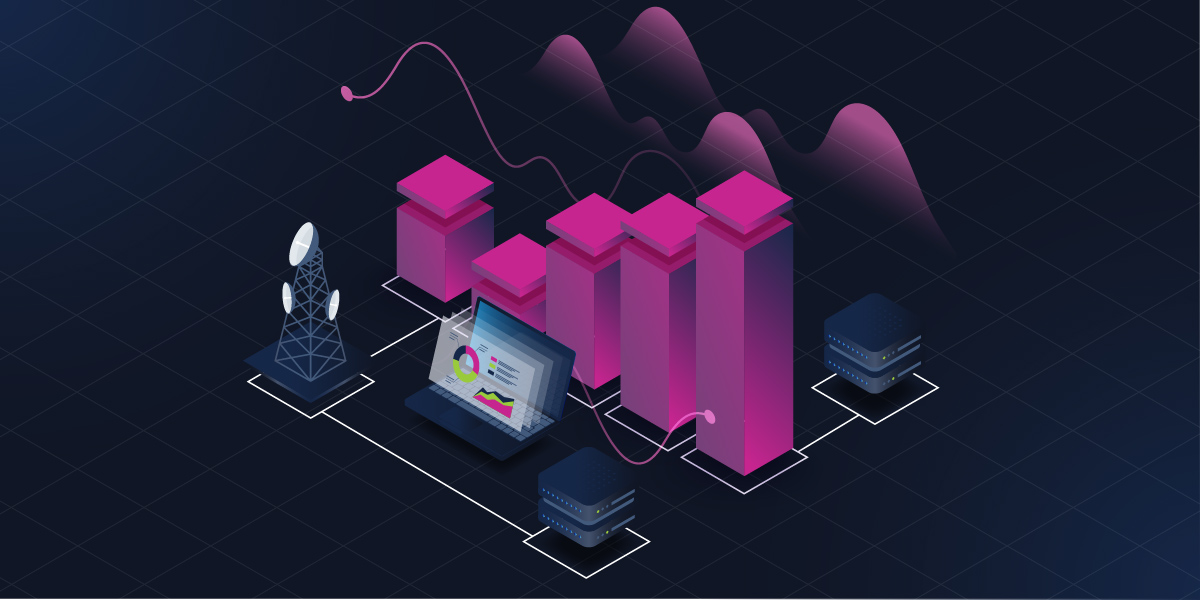The past few years have seen wireless service providers invest heavily into 5G infrastructure deployments in anticipation of incremental revenue – unfortunately, that new revenue has failed to materialize. Some of the carriers point to their delays in launching 5G standalone as one of the reasons, but the problems may be more systemic. The consumer market has shown no willingness to pay more for 5G, and compelling products have yet to materialize for the enterprise market (and private 5G is not going to help).
With 2024 now here, we’ve been reflecting on recent conversations with CSPs about their plans for the new year and beyond, and the opportunities and challenges they anticipate.
Opportunities
2023 was a year where a number of service providers launched new services that combined capabilities and assets from their network, alongside third party services (such as interconnect) to offer global networking services.
We expect this trend to accelerate in two dimensions next year. First, the number of NaaS-like, combinatory “TechCo” services will increase dramatically. Second, and more critically, service providers will refine and simplify the orchestration infrastructure to allow for a more rapid deployment, “factory” model for service onboarding.
By taking lessons learned by the early adopters, I anticipate that the focus on collaborative service design will increase. What I mean by this is that the product, IT, and networking teams will need to work more closely throughout all phases to enable a shortened product launch lifecycle (ideation-engineering-orchestration).
Challenges
To gain the ability to offer new products at a pace and agility that meets today’s market, service providers must find ways to contend with two entrenched industry challenges:
- The siloed nature of each IP domain’s automation stack.
- The inflexibility of traditional OSS/BSS stacks.
Historically, there has not been much attention paid to cross-domain integration. If an end user orders a service, an order system feeds a provisioning system which orders the service all within a single stack — but this becomes more challenging if a service involves multiple domains.
In addition, traditional order management and OSS/BSS models have proven too expensive and too rigid to accommodate the diversity of technologies CSPs are looking to offer and the speed at which they aim to create new offerings.
As a result, the communications service provider technology and automation landscape is set to shift significantly over the next year. The following 3 trends can be viewed as macro strategic categories for the shifts many CSPs are beginning to undertake.
Trend 1: Partnerships, Vendor Diversification, & Mixed Infrastructure
Alliances with hyperscalers are clearly here to stay, and they enable CSPs to leverage efficiently managed global cloud infrastructure to deliver services.
This is a significant change to an industry that has historically been unwilling to leverage third party infrastructure for its core business offerings. But financial pressures and technological realities are driving CSPs to be more willing to form partnerships.
In 2024, there will be a greater focus on these partnerships, but creating, deploying, and operating services over mixed infrastructure carries its own challenges. CSPs are faced with a greater need than ever to be more agile, to use infrastructure efficiently, and to integrate service offerings across different domains. This leads to the next two trends here: cross-domain integration and orchestration, and the transformation of traditional OSS.
Trend 2: Cross-Domain Integration & Orchestration
2024 will see a significant increase in investment into solutions that offer integration between siloed technology domains, enabling CSPs to orchestrate automated workflows across multiple technologies so they can offer new products in a more agile manner. Vendors whose platforms can ‘plug in’ and integrate across siloed domains without much lift are poised to be significant players.
In 2023, one area of focus for me has been the European service provider market, which has recently been faster to adopt innovations than its U.S. counterpart due to the larger number of smaller to medium-sized players that make the market more competitive. I mention this because I am already seeing significantly more investment from European CSPs into enterprise class integration and orchestration platforms. The American giants have also begun to focus more on integration and orchestration, and in 2024 we will see investment spike as CSPs fully embrace the need for flexible integration across different domains.
Trend 3: Revolutionizing Order Management: Standardizing Digitalization & NaaS
ServiceNow has come in like an avalanche over the past few years, and alongside Salesforce, DevOps pipelines, and others, these new requesters have increased the demand for real-time interplay between order management and automation.
To keep up, CSPs have generally invested into NaaS (Network as a Service) models, turning human-driven processes into automated products that can be requested via self-service. The ideal state is for each product to be exposed to all requesters via API so that ServiceNow users see a menu of options, pipelines can call network services, etc.
However, it has proven a slow process to digitalize each existing product such that it can be offered for self-service. As one individual from a service provider’s BSS organization said to me recently, “it feels like we’re starting from scratch with each product.”
In 2024, there is likely to be a significant evolution in terms of the standardization of this digitalization process. Platforms that enable different domain teams to easily transition products into API-driven self-service outcomes will accelerate the pace at which CSPs can move both existing and new products into a fully digitalized NaaS fulfillment model.
Final Thoughts
5G still has a lot of promise, but CSPs are seeking new ways to leverage the infrastructure in order to differentiate themselves — and to do that, changes must come in terms of how CSPs approach automation across domains and how they manage service orders.
In 2024, we expect greater investments in these areas than ever before. CSPs that make the right moves and successfully transition “from Telco to TechCo” will begin to see revenue from their recent 5G rollouts — but those who continue to struggle with legacy order management, siloed technology domains, and infrastructure inefficiency will likely face significant challenges.





